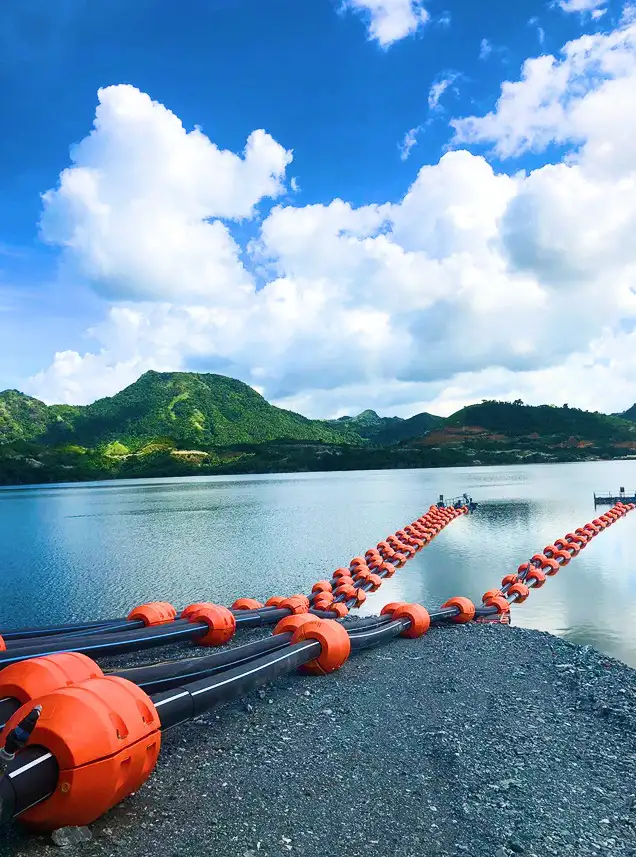A floating hose is a type of flexible pipeline used to transfer fluids (such as slurry, crude oil, or water) in marine or dredging operations. It is designed with buoyant materials to float on the water’s surface, enabling easy handling and alignment.
Floating hoses are commonly used in: Dredging operations Offshore oil transfer Floating LNG terminals Marine fuel/oil bunkering Floating pontoons and discharge lines
Typical materials include: Inner lining: Rubber or synthetic material resistant to the transported medium (e.g., oil, slurry) Reinforcement: High-tensile textile or steel cords Outer cover: UV- and abrasion-resistant rubber Buoyancy layer: Closed-cell foam or other lightweight material
Easy to deploy and retrieve Can handle harsh marine environments Provide flexibility in fluid transfer Minimize risk of submersion or kinking Visible on water due to bright color or markers
Floating Hose: Designed to float on water; easier to access and maintain. Submarine Hose: Sinks and operates underwater; used when surface hoses are not suitable due to wave action or navigation.
Buoyancy is maintained using a foam layer or floating collars that ensure the hose remains on the water surface, even when fully loaded with fluid.
Standard diameters range from 150 mm to 900 mm (6" to 36"), and lengths can be customized based on project requirements. Always check manufacturer specifications.
Lifespan depends on usage conditions, material quality, and maintenance, but typically ranges from 3 to 7 years under normal conditions.
Regular visual inspections for wear or damage Pressure testing for leaks Cleaning after use, especially with abrasive slurry Storing in shaded or sheltered areas when not in use
Yes, but they must be properly engineered with reinforced materials and secure connections to withstand wave impact and strong currents.
Modern floating hoses are designed with high-integrity seals and robust construction to minimize the risk of spills. Some versions comply with environmental safety standards.
Yes, manufacturers offer customization for: Length and diameter Pressure rating Lining material End connections (flanged, quick-coupling, etc.) UV protection and reflective markers
